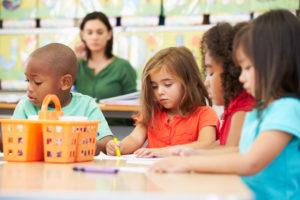
Children love to draw, scribble — then write!
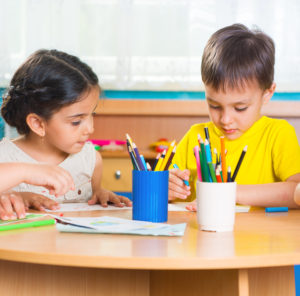
It’s just a new way to communicate.
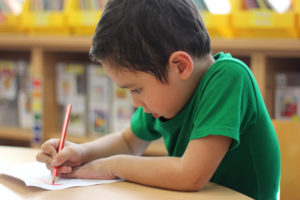
They are fascinated with it.
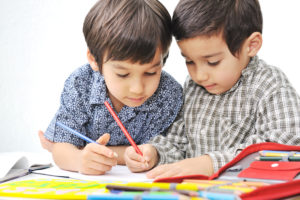
And their writing skills readily transfer to reading books!

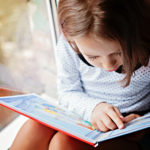
Learning to Write Is the Next Step Along a Path the Child is Already On

Drawing and scribbling — then writing — are the next steps after speech on a path the child has been working on since birth. Writing fills the gap between speech and reading.
Writing develops phonics and simple word recognition, and reading follows. In a print-rich environment, a child’s growth proceeds along the following path:
1. Crying/Body Language —> 2. Speech —> 3. Scribbling/Drawing —> 4.Writing —> 5. Reading Books
But many preschoolers have seldom, if ever, seen anyone writing. So they don’t realize print is “talk written down.” As a result, they have stopped at Speech.
So of course they will struggle with traditional reading programs, which begin with Reading Books. These professionally published books are full of someone else’s speech translated into print — thus the farthest out from where the child stands. So when asked to skip scribbling, drawing, and writing — the leap into books is just too far. Such a child will either fail completely, or the very least, have great difficulty. And any struggle in learning to read is completely unnecessary.
Illustration: Writing Comes before reading

The illustration shows the path a child is already on. The smallest sphere — IMAGES, FEELINGS, “IDEAS” — represents the center of the child. From birth forward, children are attempting to communicate what’s in that center. Each expanding sphere represents stages in the child’s natural progression.
Very early, infants communicate from that center through BODY LANGUAGE. They lunge toward something they want as we approach with it. They cry when their caregiver leaves the room and brighten when they reappear. Through body language, they give us a fairly clear idea of their thoughts, such as they are, and most definitely their feelings. Before long, they reach the next phase, SPEECH. Here they usually delight us at first by saying “Ma Ma” or “Da Da” when a parent figure appears. Soon they are speaking full sentences.
After speech, the child needs to unlock the secret of print: Virtually all children learn to speak. Writing is the next major step. Writing fills the gap between speech and reading. But to move into writing requires being in a print-rich environment where the child can see that words can be translated into print.
For the fortunate child —one who has seen adults write grocery lists, labels, notes and has had access to pencil and paper — comes what we can think of as a pre-writing stage: “SCRIBBLING/DRAWING.” One day, such a child makes indiscernible marks on their drawing, then looks up proudly to say something like, “See, this is our kitty, and here’s where it says ‘Fluffy.’”
With this, they are signaling to us they have come to realize that print is used to convey ideas/speech. Now’s the time for us to begin showing them how their scribbling must look so others can understand it. And we do this best by repeatedly modeling within meaningful context. That is, we need to write words they ask for because they have strong meaning for them. (Notice this is exactly what we did as they were learning to speak.)
But for the child who lacks a print-rich environment, progress stops with speech. Not seeing anyone make lists, write notes, etc., they have no idea what print is for. So their progress along the path comes to a halt at speech. This leaves them at a strong disadvantage when they enter school, especially if faced with a traditional reading program. (For description of traditional reading programs, see subheading, First Consider, Are We Teaching Reading…? in Key Words & The Steps.)
Begin with writing, all will succeed
Writing fills the gap between speech and book-reading. So the fortunate child — one who enters school already knowing of the connection between speech and print, usually can make the leap from there to reading books. Perhaps they have spontaneously begun to scribble, perhaps not. But if not yet able to write, it will probably be a struggle — and starting out by seeing their own words written down would have made it much easier.
It’s quite a different story, though, for the child coming in knowing very little, or nothing, of print. Their SCRIBBLING/DRAWING stage is nonexistent, and their WRITING sphere has remained completely empty.
So here’s how the path looks for the child NOT coming from a print-rich environment, as they face a traditional reading program:
1. Crying/body language —> 2. Speech —> 3. Scribbling/Drawing —> 4. Writing —> 5. Reading Books.
Book reading is very far from where they stand. Often, the gap is just too far to make the leap. That child is likely to struggle, perhaps fail completely. And this has a negative impact on all that follows for that child.
On the other hand, all children — both those fortunate enough to know the purpose of print and those disadvantaged by lack of that understanding — all children benefit from starting with writing. They have been working spontaneously on the amazing challenge of learning to speak. Now we help them take one more cautious step. We show them how their own speech looks when translated into print. This captures their interest and imagination, and they want to do it themselves.
By staying on the natural path, so that writing fills the gap between speech and reading, everyone can succeed. Children as young as 4 years old (even earlier) can benefit from exposure to writing. We begin by showing them how their own “talk” looks when written down for them. From this, they will recognize and remember from day to day a growing collection of their own words in print.
Over time, they watch and “help” as someone writes their own words for them. Through this, they gradually absorb connections between letters and sounds. They also learn how to form the letters needed. So they are soon able to do some of that writing themselves.
From there, and at their own pace, they take over the entire writing process. The main difference between the progress of those who come with some understanding of print and those who do not, is how long it takes to reach independence. Once they fill in what they missed during their preschool years, every child reaches that point. Then as their ability to write grows, the ability to read what others have written begins to emerge spontaneously.
children first dictate, then write their own fail-safe readers
Schools spend millions of dollars every year on books in traditional reading programs. But in the approach described here, the children are first dictating, then eventually writing their own first readers. So these books are perfectly controlled by the child’s own limited vocabulary and always concern matters of interest to them. Thus they are a fail-safe way to begin book reading.
All children will learn to read by practicing with books they have dictated, or later, those they have written themselves. As with writing, the only difference is how long it will take them to reach this point. But this is not always true of children who begin with a traditional approach — those who have sidestepped writing. Too many of them struggle, perhaps fail, or at best, become “reluctant readers.”
Again, both struggle and failure are completely unnecessary. Filling the gap between speech and reading can be managed — with confidence, pleasure, and ease — by having them write first.
Skills developed through writing, including phonics, automatically transfer to reading
The children in my K-2 classroom would say they “just happened” to learn to read. But this was far from the case. A very carefully structured framework guided their development. This framework also incorporates phonics, learned while being used for spelling the words they wanted to write. (Not practiced on worksheets, in isolation, but absorbed through use — just as when they learned to speak.)
Once again, they had absorbed literacy skills through though modeling and to convey meaning. They also began to notice that the words they used were some of the same words other children were writing. They were also the ones the teacher wrote in charts and class-generated newspapers. With this solid foundation in phonics and recognizing the many words commonly used by young children, their ability to read seems to them to have “just happened” to spill over into books.
Once a child reaches this level of independence, they can expand their vocabulary and their view of the world through children’s literature and books of information on various topics. At that point, their new reading skills become a tool to broaden their understanding and view through simple research projects. And their writing skills allow them to tell the world about it.
Notice that when starting
With a Traditional Approach to Reading,
The Child who stands at Speech
Will struggle, perhaps fail to make the
Leap to Reading Books
The Child who stands at Scribbling/Drawing
And successfully leaps from there to Book Reading,
Masters One Skill: Reading.
The Child who moves from Scribbling/Drawing
Through Writing, then into Book Reading,
Masters Both Reading and Writing!
next —> key Words & The Steps
<— back to How Kids Write to read was developed
individualized language experience